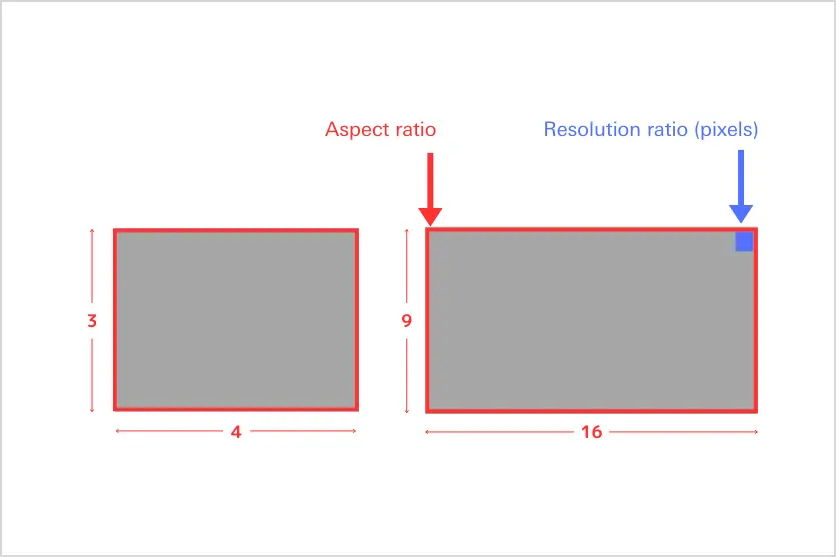May 30, 2025
What is a photo's aspect ratio? A detailed explanation of the differences in impression and recommended ratios
What is a photo's aspect ratio? A detailed explanation of the differences in impression and recommended ratios


The aspect ratio is a number that indicates the width-to-height ratio of a photo, but it's not just that. Choosing the right setting based on the subject and purpose can dramatically change the way the photo is conveyed and the impression it leaves. Many people probably shoot with the settings as is, but let's review the knowledge in this article.
Aspect ratio is a number that represents the ratio of the width to the height of a photograph. For example, it is expressed as the ratio of "width: height", such as "3:2" or "16:9". This number indicates the ratio, and is a different concept from the actual number of pixels or size.
In general single-lens cameras, the aspect ratio is usually set to "3:2". This is said to originate from the ratio of 35mm film in the film camera era, and it is a versatile frame that is suitable for many subjects.
Difference Between Aspect Ratio and Resolution
A concept that is easily confused with aspect ratio is resolution. Aspect ratio indicates the shape of a photograph (the ratio of the width to the height), while resolution indicates the number of pixels. For example, a 1920 x 1080 pixel photo and a 3840 x 2160 pixel photo both have an aspect ratio of 16:9, but the latter has four times higher resolution. In other words, the aspect ratio does not change whether the resolution is high or low.
Also, although it is a bit technical, there is also a concept called "pixel aspect ratio" which indicates the shape of each pixel on an image sensor. 1:1 (square) is usually the norm for digital photographs.
3:2 is a traditional ratio that continues from 35mm film cameras, and is the most common aspect ratio as the standard setting for single-lens cameras. The width is 1.5 times the height, making it a slightly horizontal composition.
It is a well-balanced and highly versatile frame because it gives an impression close to the human field of vision for various subjects. It is easy to use in a wide range of genres, such as landscapes, portraits, and snapshots, and even beginners can easily compose their shots without feeling uncomfortable. Another major advantage is that when printed, it has almost the same ratio as the L size (89mm x 127mm), which is common for photo printing, so it can be printed as is without cropping.
4:3
"4:3" is a common ratio for compact digital cameras and Micro Four Thirds cameras. Compared to 3:2, it is slightly closer to a square. It is easy to create a stable composition and gives a calm impression.
It is particularly suitable for shooting architecture and still lifes, and is characterized by its ability to capture the subject in a balanced manner. In addition, the vertical "3:4" is also an easy-to-use ratio when shooting a bust-up of a person, and there is not too much unnecessary space above or at the feet, making it easier to create a natural composition.
16:9
"16:9" has the same widescreen ratio as a typical smartphone screen, giving it a cinematic, horizontal impression. It is useful for vast landscapes and scenes with multiple subjects lined up in a row. Although it is not as wide as a panorama, the wide field of view can create a sense of openness.
In addition, 16:9 is often the best ratio for images for horizontal screens, such as SNS cover photos and YouTube thumbnails. The standard format for video shooting is often 16:9, so if you are shooting both still images and videos, it will be easier to edit later if you keep it consistent with this ratio.
1:1
"1:1" is literally a square composition. With the spread of smartphones and the emergence of social media such as Instagram, this ratio has become widespread. Square frames make it easy to place the subject in the center, and are suitable for emphasizing symmetrical compositions and geometric patterns. It is suitable for those who want to highlight the presence of the subject itself or who prefer simple expressions.
Aspect ratios and popular compositions
Once you understand the aspect ratio, think about how it can be combined with composition. Here, we will explain the relationship between typical composition methods and aspect ratios.
Rule of thirds
A composition in which the screen is divided into thirds vertically and horizontally and the important subject is placed at the intersection is called the rule of thirds. The appeal of the rule of thirds is that it is easy to balance in a variety of scenes and can be applied to any aspect ratio. It is easy to use even for beginners, and many smartphones and cameras can display the rule of thirds when shooting. For example, placing the horizon line 1/3 of the way down makes it easier to take landscape photos with a balanced sky and ground.
Diagonal composition
Diagonal compositions emphasize movement and depth by placing your subject along the diagonal lines that connect the four corners of your photo. Rectangular aspect ratios like 3:2 and 4:3 create a more natural eye movement because the diagonal lines slope more gently, while a square aspect ratio like 1:1 creates a more powerful effect because the diagonal lines are at a 45-degree angle.
Hinomaru Composition
The Hinomaru composition is a simple composition that places the subject in the center of the screen, and is particularly well suited to 1:1 frames. It is effective when you want to emphasize the presence of the subject itself or regular geometric patterns. For example, it is suitable for close-ups of flowers or portraits, where you want to directly convey the appeal of the subject itself.
However, you need to be creative with the background so that it doesn't just look like it's "just placed in the center." You can make the subject stand out even more by blurring the background or choosing a simple one.
Change the aspect ratio according to the subject
From here, we will consider the aspect ratios suitable for various subjects. There is generally no problem with leaving the default setting of your SLR camera, but changing it depending on the subject you want to use as the main subject will expand the range of expression.
Landscape Photography
In landscape photography, you want to express the beauty and grandeur of the vast natural world. For such scenes, aspect ratios of 16:9 or 3:2 are often appropriate. Using a wide frame can emphasize the expanse and grandeur of mountains and oceans. If you want to capture an even wider landscape in one shot, try using an even wider aspect ratio such as 2:1 or 3:1 for panoramic photography.
Portrait

Vertical aspect ratios of 2:3 or 3:4 are common when capturing a person's whole body or upper body. A vertical frame allows you to capture a person's vertical silhouette naturally while eliminating unnecessary background, allowing you to focus firmly on the main subject. Also, taking a close-up shot of the face in a square 1:1 frame is an effective way to emphasize the subject's expression and emotion.
On the other hand, for group shots of multiple people or when you want to include the context of the background, a horizontal 3:2 or 16:9 frame is often more suitable.
Building
For tall structures such as skyscrapers, shoot them vertically in a 2:3 aspect ratio to emphasize their height and impact. Try looking up at an angle to emphasize the vertical lines stretching into the sky.
On the other hand, when capturing the entire building with a wide-angle lens, aspect ratios of 3:2 or 4:3 are common. This allows you to capture the entire building in a balanced way and makes it easier to emphasize the perspective.
Also, for symmetrical buildings, shooting them in a square 1:1 frame, rather than just 3:2, will make the geometric beauty stand out. In addition to symmetry, details with a certain pattern or repeating elements can also be captured in a 1:1 frame to create an impressive shot.
Aspect ratios suited to different applications
If you decide what you ultimately want to do with the photos, such as printing them or uploading them to social media, you can choose an aspect ratio that takes that into consideration. Here we will introduce common aspect ratios for different purposes.
Printing on A4 or L size paper
The L size (89 x 127 mm), which is a common size for printing photos, is almost the same as the 3:2 aspect ratio, so you can print photos taken with a standard SLR camera setting as is.
On the other hand, A4 size (210 x 297 mm) has a ratio of approximately 1:√2 (1:1.414). Therefore, photos taken with a standard aspect ratio (such as 3:2 or 4:3) will need to have borders on all four sides or have the top, bottom, left and right sides cut off. For this reason, if you are taking a photo for printing purposes, it is recommended that you take the photo a little wider than the final print size to leave room for trimming.
Upload to SNS
If you plan to share your photos on social media, it's important to know the optimal aspect ratio for each platform. By keeping this in mind, you can prevent unintentional cropping of your photos.
In addition to 1:1, Instagram posts also support 4:5 vertical and 1.91:1 horizontal formats. Instagram Stories are based on a 9:16 vertical format. Since they use the entire screen of your smartphone, we recommend shooting in portrait orientation. If you want to post to Instagram, it's a good idea to set your camera's aspect ratio to 4:5 or shoot in a composition that allows you to crop later.
X(Twitter)
X (Twitter) supports various aspect ratios for landscape images, such as 3:2, 4:3, 2:1, and 16:9. For portrait photos, a 3:4 ratio will often look best on the timeline. Also, when posting multiple images, it is best to use the same aspect ratio for all subsequent images to make them look beautiful on the timeline.
YouTube
Thumbnails are a very important element in getting people to watch your videos on YouTube. YouTube thumbnails are in a 16:9 horizontal format, which matches the aspect ratio of the video itself, so you can use a scene from the video as the thumbnail. Also, thumbnails are displayed as small icons in search results and related videos, so it's better to have a simple, eye-catching composition.
In addition, YouTube Shorts are in a 9:16 vertical video format, just like Instagram Reels and TikTok. For YouTube, it's a good idea to shoot with vertical content in mind.
Recording videos
The standard aspect ratio for video shooting with a single-lens camera is 16:9 widescreen format. This is the aspect ratio used in most video standards, including HD, Full HD, and 4K. If you are planning to watch on a TV or monitor, 16:9 will be the most natural format. On the other hand, for short videos (Instagram Reels, YouTube Shorts, TikTok), the 9:16 vertical format is the mainstream.
Therefore, if you are shooting both still images and videos of the same subject, it is better to keep it consistent at 16:9 for smoother editing. For example, when shooting landscapes, if you take still images in 16:9, you will be able to switch seamlessly between them and videos.
To change the aspect ratio
Finally, let's look at how to change the aspect ratio. There are two main ways to do this: by setting it when shooting, or by cropping it in editing after shooting.
Changing the settings of your SLR camera
Many SLR cameras allow you to change the aspect ratio in the menu screen under "Image Size" or "Aspect". The setting method varies depending on the manufacturer and model, but usually there is a related item in the shooting menu.
One advantage of changing the aspect ratio directly on the SLR camera is that you can shoot while checking the actual framing in live view. Note that if you are shooting in RAW format, the aspect ratio information is simply recorded in the metadata as a "tag", and in fact the information of the entire sensor area is usually saved. In that case, you can change to a different aspect ratio later in editing software.
Trimming during editing
Editing software and smartphone apps have a trimming function. When trimming, you usually select a tool called "Trim" or "Crop" and adjust the aspect ratio. Many tools also have presets (3:2, 4:3, 16:9, etc.) to choose from.
When considering this type of editing, it's best to take the photo with a composition that leaves some room for error, as this will make it easier to adjust later. However, since excessive trimming can lead to a decrease in image quality, it's best to keep the composition as close as possible to the original when shooting.
Understand aspect ratios and use them in your photography
The aspect ratio is not just the ratio of width to height, but also a factor that affects the impression of the photo. By changing the aspect ratio depending on the main subject, you can convey the appeal more effectively. In addition to the standard setting, try changing the aspect ratio or cropping to see how the impression changes.

Lens Featured in this Impression
-
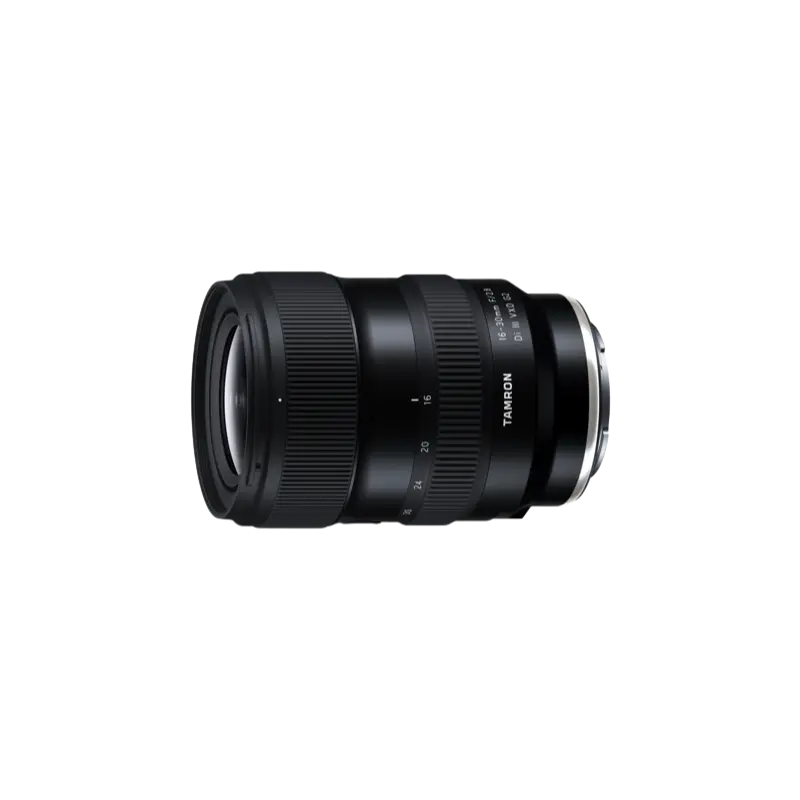
-
16-30mm F/2.8 Di III VXD G2 a064(Model )
Expanding upon the success of the highly acclaimed TAMRON 17-28mm F/2.8 Di III RXD (Model A046), the G2, 2nd-generation emerges as an advanced 16-30mm F/2.8 Di III VXD G2 (Model A064). While broadening the zoom range, it maintains a compact, lightweight design and delivers exceptional image quality. In addition, it features improved autofocus performance and has been updated to the latest lens design, enhancing overall operability. It’s also compatible with TAMRON Lens Utility™, allowing you to customize practical functions for both photography and videography. Retaining the mobility and versatility of its predecessor, the 16-30mm F2.8 G2 unlocks new creative possibilities. Experience the unique creative expressions that only a fast, ultra wide-angle lens can offer.
-
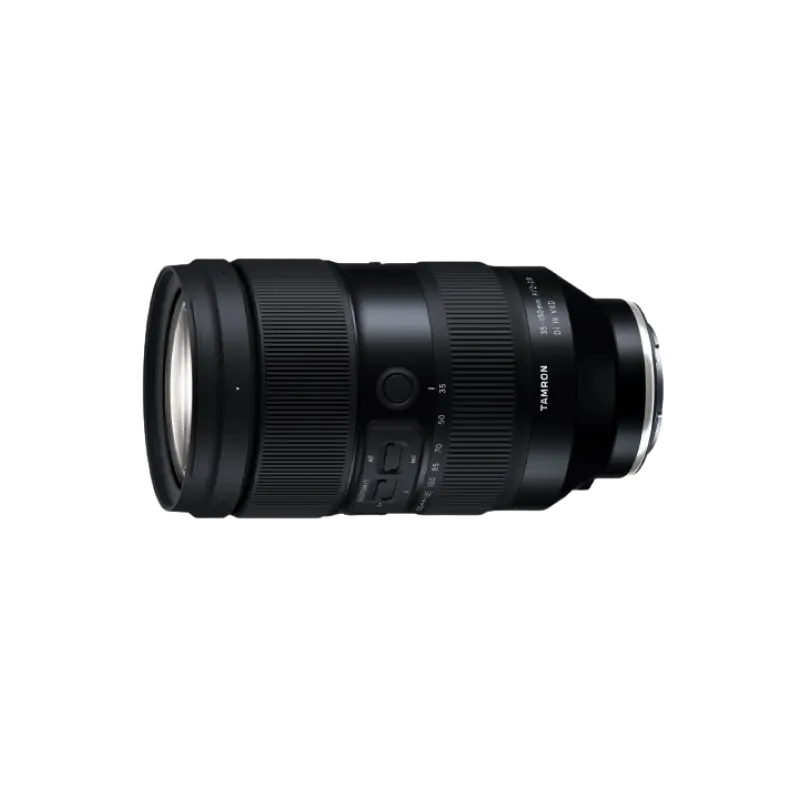
-
35-150mm F/2-2.8 Di III VXD a058(Model )
The 35-150mm F/2-2.8 Di III VXD (Model A058) is a high resolution travel zoom lens that covers everything from the 35mm wide angle to the 150mm telephoto focal length, the first zoom lens achieving an aperture of F2 at the wide angle end. It has a groundbreaking fast-aperture and utilizes the linear motor focus mechanism VXD (Voice-coil eXtreme-torque Drive), thereby achieving high speed, high precision autofocusing. The innovative lens design enabled us to greatly improve the lens's grip and functionality. The software, developed in-house, enables to easily customize functions and to update firmware.
-
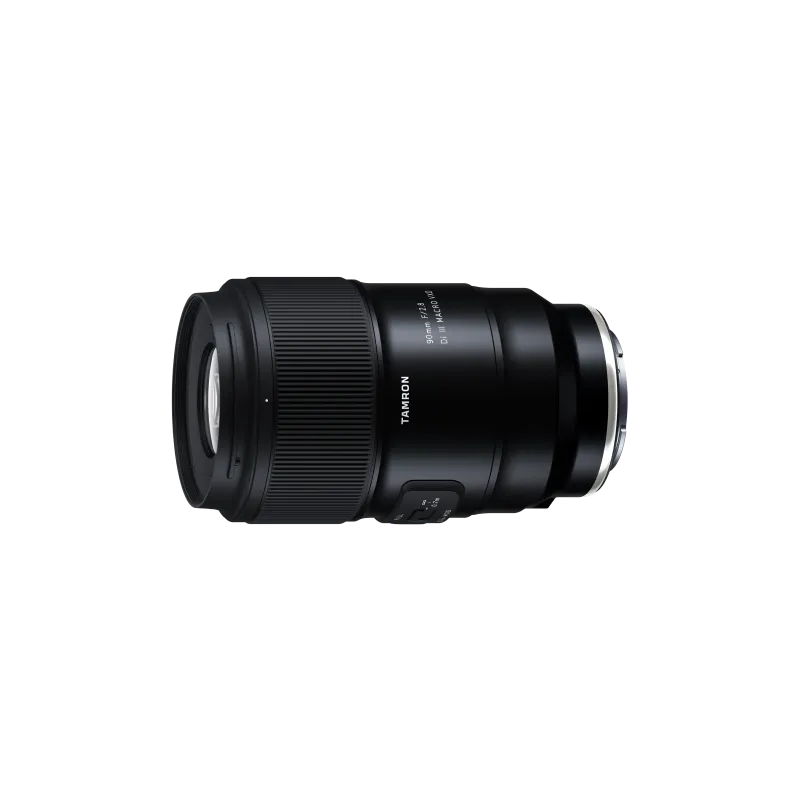
-
90mm F/2.8 Di III MACRO VXD f072(Model )
The 90mm F/2.8 Di III MACRO VXD (Model F072) is the mirrorless version of the TAMRON 90mm macro lens, beloved for many years. It offers outstanding resolution and optical performance, featuring TAMRON’s first 12-blade circular aperture for stunning bokeh and starburst effects. Its lightweight, compact design ensures easy portability, and the new hood with sliding window simplifies filter use. The lens is also compatible with TAMRON Lens Utility™ and has high-speed, high-precision AF, expanding possibilities for photography and videography. This lens blends TAMRON's legacy of brilliance with advanced technology, marking a new chapter in the 90mm macro lens history.
-
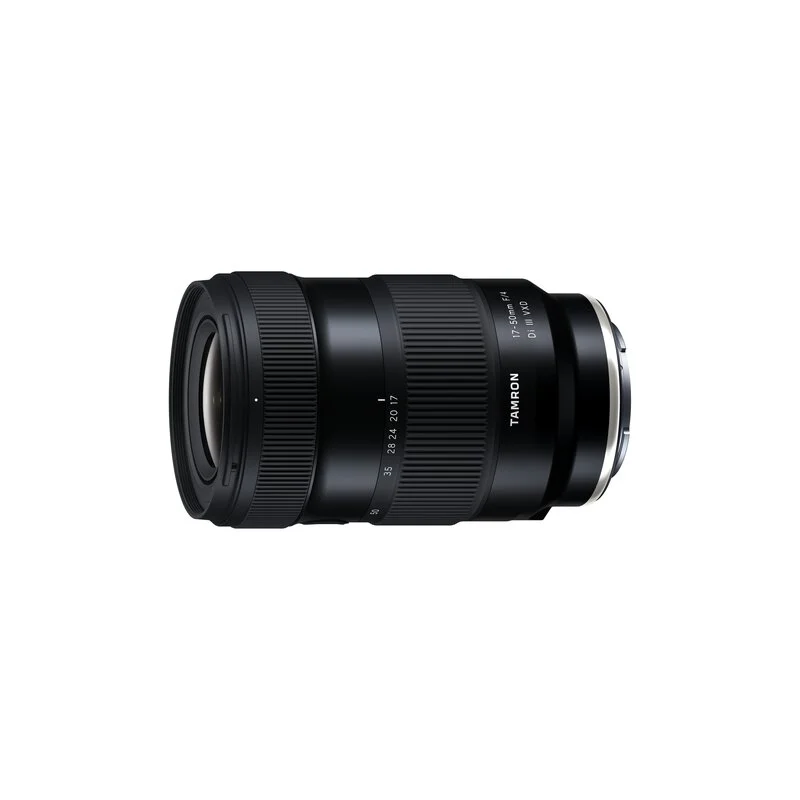
-
17-50mm F/4 Di III VXD a068(Model )
It's the world’s first lens covering from ultra wide-angle 17mm to the standard 50mm focal length. The highly-compact TAMRON 17-50mm F/4 Di III VXD (Model A068) for Sony E-mount full-frame mirrorless cameras offers maximum versatility for still and video creators. From landscapes to living rooms, this lens captures all that you see.
-
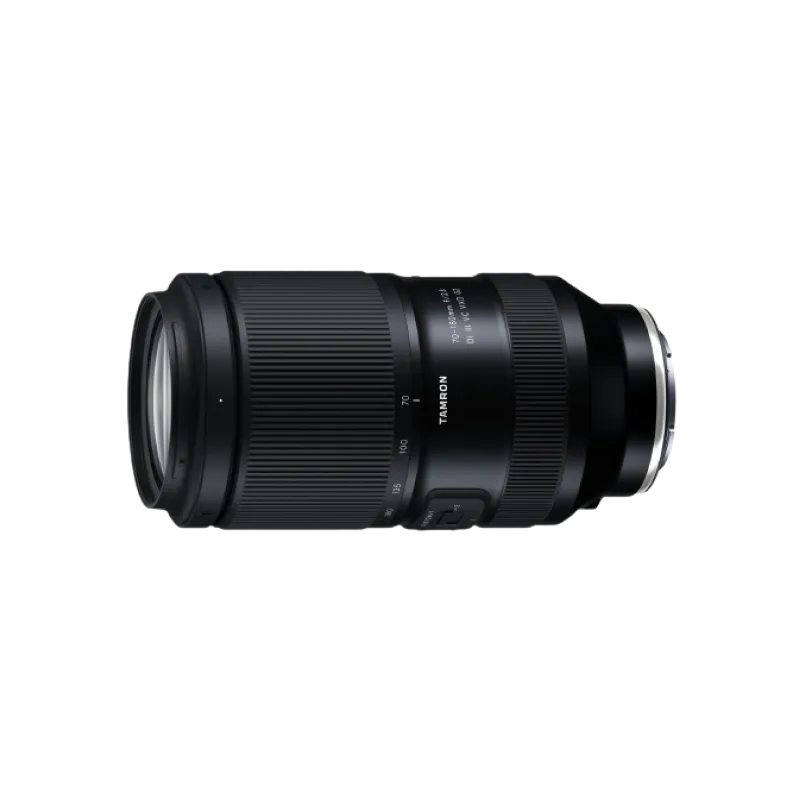
-
70-180mm F/2.8 Di III VC VXD G2 a065(Model )
70-180mm F/2.8 Di III VC VXD G2 (Model A065) has evolved to G2 level.This is the world’s smallest and lightest, fast-aperture telephoto zoom lens for Sony E-mount and Nikon Z mount with astounding portability and superb image quality.


